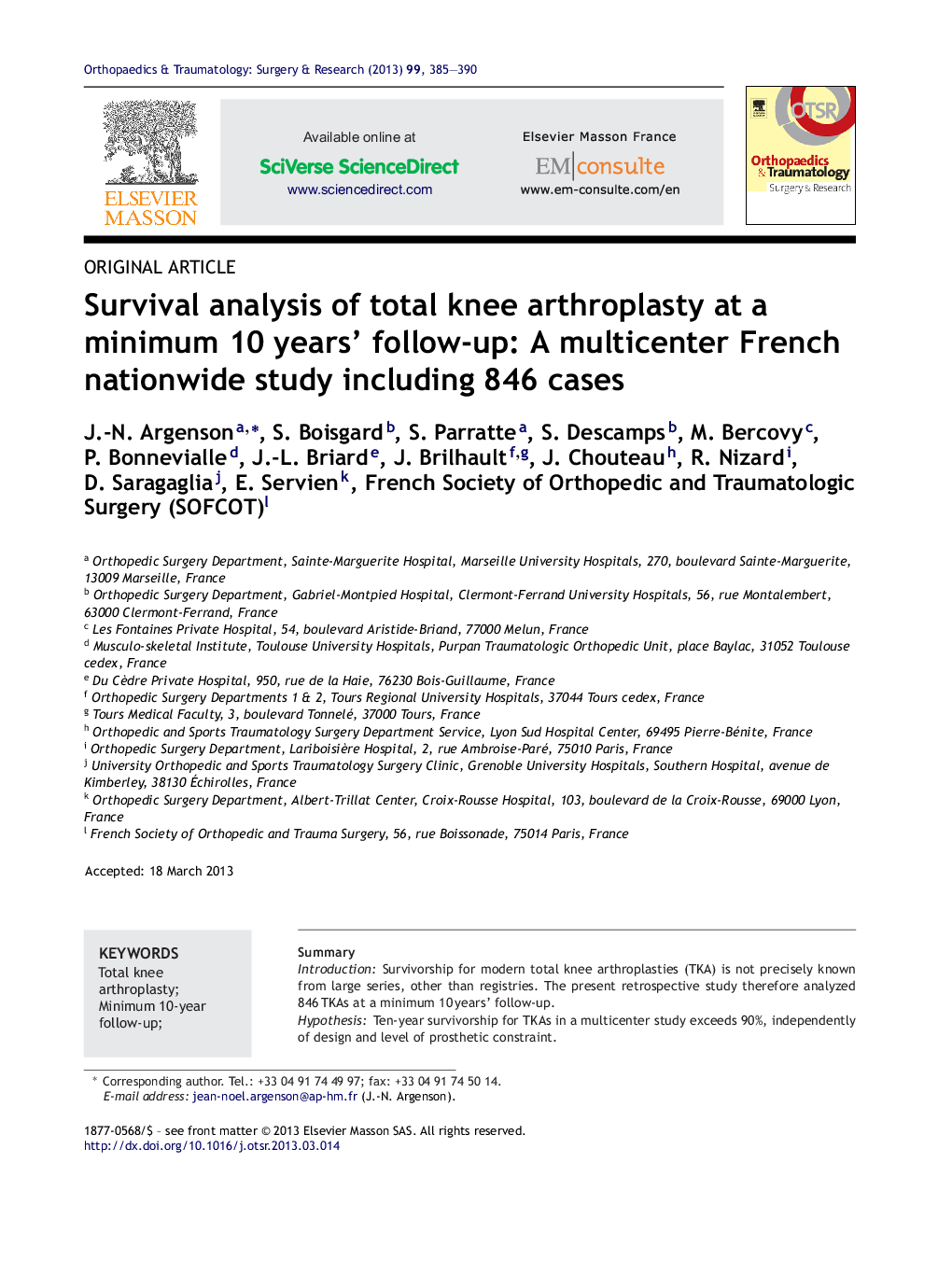| Article ID | Journal | Published Year | Pages | File Type |
|---|---|---|---|---|
| 4081480 | Orthopaedics & Traumatology: Surgery & Research | 2013 | 6 Pages |
SummaryIntroductionSurvivorship for modern total knee arthroplasties (TKA) is not precisely known from large series, other than registries. The present retrospective study therefore analyzed 846 TKAs at a minimum 10 years’ follow-up.HypothesisTen-year survivorship for TKAs in a multicenter study exceeds 90%, independently of design and level of prosthetic constraint.Materials and methodsEight hundred and twenty-eight patients (846 TKAs) were assessed on the Knee Society score. Mean age was 71 years (range, 41–93 years); 274 males and 554 females (67%); 496 patients (60%) were active; diagnosis was principally osteoarthritis (n = 752 [89%]). Most TKAs were cemented (n = 704 [83%]), replacing the patella (n = 668 [79%]) and sacrificed the posterior cruciate ligament (PCL) (n = 707 [84%]), 65% being posterior-stabilized and 35% ultracongruent, with fixed (39%) or mobile bearing (61%).ResultsAt a minimum 10 years’ follow-up, mean knee score rose from 35 (15–55) to 83 points (74–95), and functional score from 24 (5–45) to 74 points (60–90); mean flexion rose from 105° (25–125°) to 112° (25–125°). Mean hip-knee-ankle angle was 179.5° (169–189°). Sixty-three (7.5%) revision surgeries were required, mainly for loosening (n = 18 [2%]) or infection (n = 18 [1.8%]). Overall 10-year survivorship was 92% (95% CI: 0.90–0.94). There was no significant difference in survivorship according to implant design or PCL retention. Activity level correlated with revision rate; mechanical complications were more frequent in active and infectious complications in sedentary subjects. Revision was not more frequent in TKA aligned outside the 177–183° range.DiscussionTen-year TKA survivorship was 92%, independently of design and level of mechanical stress. Revision was mainly for infection or loosening, and not for greater than 3° axis misalignment. Mechanical complications were more frequent in younger and more active subjects, for whom therefore other treatment options or technical improvements should be sought.Level of evidenceLevel IV. Retrospective study.
